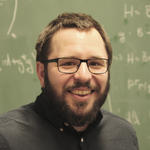The broad aim of this project is to investigate boundary value problems and index theory for first-order operators in both Riemannian and Lorentzian settings. It is a metamorphosis from a previous project titled ``Index theory on Lorentzian manifolds''.
Investigations during the former project yielded an understanding of the similarities in Riemannian and Lorentzian settings for the kind of problems of our interest in the presence of boundary, despite the huge analytic difference of elliptic and hyperbolic equations. This is one reason that the current reformulation of the project has a broader range and scope. More precisely, in the study of initial value problems in the Lorentzian setting, or the study of boundary value problems in the Riemannian setting, the boundary is Riemannian and there are induced operators on the boundary which share similarities in both cases. This induced operator symbol involves information about the principal symbol of the original operator in the direction of the conormal. In the Riemannian setting, positive definiteness yields a tangible spectral theory for the induced operator on the boundary. This allows for attack using $H^\infty$-functional calculus methods. The Lorentzian situation is more complicated due to the presence of null vectors. However, initial calculations for specific operators suggest that these issues can be mitigated and the spectral theory still understood in this setting.
In particular, this paves way for rigorous proofs of the well posedness of operators acting on higher spin settings, with the Rarita-Schwinger operator being a quintessential example. As aforementioned, the previous project revealed the significance of the \(H^\infty\)-functional calculus for the study of such problems.
In the analysis of Lorentzian index and boundary value problems, a key background assumption is that it is a globally hyperbolic manifold. This is necessary to deploy and utilize analytical methods in the study of such problems.
Unfortunately, even in the simple setting of an isolated rotating blackhole, such a spacetime fails global hyperbolicity due to violations of causality inside its event horizon. However, if we are to allow for timelike boundary, we are able to maintain this background assumption without sacrificing physical relevance. Geometrically, this means that we are forced to account for initial hypersurfaces that are Riemannian manifolds with boundary. Moreover, in order to be truly physically relevant, it is important to allow such manifolds to be noncompact with compact boundary. Results of the previous incarnation of this project exactly address boundary value problems in the setting of noncompact Riemannian manifolds with compact boundary. It brings with it new mathematical technology, particularly methods arising from the $H^\infty$-functional calculus as well as real-variable harmonic analysis a la Calderón-Zygmund, which have now been identified to be significant to a much wider class of problems, including those in the Lorentzian setting.
Publications
We show scalar-mean curvature rigidity of warped products of round spheres of dimension at least 2 over compact intervals equipped with strictly log-concave warping functions. This generalizes earlier results of Cecchini-Zeidler to all dimensions. Moreover, we show scalar curvature rigidity of round spheres of dimension at least $3$ minus two antipodal points, thus resolving a problem in Gromov's ``Four Lectures'' in all dimensions. Our arguments are based on spin geometry.
| Journal | Symmetry, Integrability and Geometry: Methods and Applications (SIGMA) |
| Volume | 20 |
| Pages | article 035, 26 pages |
| Link to preprint version | |
| Link to published version |
Related project(s):
37Boundary value problems and index theory on Riemannian and Lorentzian manifolds52Spaces and Moduli Spaces of Riemannian Metrics with Curvature Bounds on compact and non-compact Manifolds II
We consider first-order elliptic differential operators acting on vector bundles over smooth manifolds with smooth boundary, which is permitted to be noncompact. Under very mild assumptions, we obtain a regularity theory for sections in the maximal domain. Under additional geometric assumptions, and assumptions on an adapted boundary operator, we obtain a trace theorem on the maximal domain. This allows us to systematically study both local and nonlocal boundary conditions. In particular, the Atiyah-Patodi-Singer boundary condition occurs as a special case. Furthermore, we study contexts which induce semi-Fredholm and Fredholm extensions.
Related project(s):
37Boundary value problems and index theory on Riemannian and Lorentzian manifolds
We extend the K-cowaist inequality to generalized Dirac operators in the sense of Gromov and Lawson and study applications to manifolds with boundary.
Related project(s):
37Boundary value problems and index theory on Riemannian and Lorentzian manifolds52Spaces and Moduli Spaces of Riemannian Metrics with Curvature Bounds on compact and non-compact Manifolds II
Based on the Atiyah-Patodi-Singer index formula, we construct an obstruction to positive scalar curvature metrics with mean convex boundaries on spin manifolds of infinite K-area. We also characterize the extremal case. Next we show a general deformation principle for boundary conditions of metrics with lower scalar curvature bounds. This implies that the relaxation of boundary conditions often induces weak homotopy equivalences of spaces of such metrics. This can be used to refine the smoothing of codimension-one singularites a la Miao and the deformation of boundary conditions a la Brendle-Marques-Neves, among others. Finally, we construct compact manifolds for which the spaces of positive scalar curvature metrics with mean convex boundaries have nontrivial higher homotopy groups.
| Publisher | World Scientific |
| Book | M Gromov, B. Lawson (eds): Perspectives in Scalar Curvature |
| Volume | 2 |
| Pages | 325-377 |
| Link to preprint version | |
| Link to published version |
Related project(s):
37Boundary value problems and index theory on Riemannian and Lorentzian manifolds52Spaces and Moduli Spaces of Riemannian Metrics with Curvature Bounds on compact and non-compact Manifolds II
This paper investigates realisations of elliptic differential operators of general order on manifolds with boundary following the approach of Bär-Ballmann to first order elliptic operators. The space of possible boundary values of elements in the maximal domain is described as a Hilbert space densely sandwiched between two mixed order Sobolev spaces. The description uses Calderón projectors which, in the first order case, is equivalent to results of Bär-Bandara using spectral projectors of an adapted boundary operator. Boundary conditions that induce Fredholm as well as regular realisations, and those that admit higher order regularity, are characterised. In addition, results concerning spectral theory, homotopy invariance of the Fredholm index, and well-posedness for higher order elliptic boundary value problems are proven.
| Journal | Advances in Mathematics |
| Publisher | Elsevier |
| Volume | 420 |
| Pages | 1-123 |
| Link to preprint version | |
| Link to published version |
Related project(s):
37Boundary value problems and index theory on Riemannian and Lorentzian manifolds
Non-local boundary conditions, such as the Atiyah-Patodi-Singer (APS) conditions, for Dirac operators on Riemannian manifolds are well under\-stood while not much is known for such operators on spacetimes with timelike boundary. We define a class of Lorentzian boundary conditions that are local in time and non-local in the spatial directions and show that they lead to a well-posed Cauchy problem for the Dirac operator. This applies in particular to the APS conditions imposed on each level set of a given Cauchy temporal function.
Related project(s):
37Boundary value problems and index theory on Riemannian and Lorentzian manifolds
The relative index theorem is proved for general first-order elliptic operators that are complete and coercive at infinity over measured manifolds. This extends the original result by Gromov-Lawson for generalised Dirac operators as well as the result of Bär-Ballmann for Dirac-type operators. The theorem is seen through the point of view of boundary value problems, using the graphical decomposition of elliptically regular boundary conditions for general first-order elliptic operators due to Bär-Bandara. Splitting, decomposition and the Phi-relative index theorem are proved on route to the relative index theorem.
Related project(s):
37Boundary value problems and index theory on Riemannian and Lorentzian manifolds
We adapt the Faddeev-LeVerrier algorithm for the computation of characteristic polynomials to the computation of the Pfaffian of a skew-symmetric matrix. This yields a very simple, easy to implement and parallelize algorithm of computational cost O(n^{β+1}) where n is the size of the matrix and O(n^β) is the cost of multiplying n×n-matrices, β∈[2,2.37286). We compare its performance to that of other algorithms and show how it can be used to compute the Euler form of a Riemannian manifold using computer algebra.
| Journal | Linear Algebra and its Applications |
| Volume | 630 |
| Pages | 39-55 |
| Link to preprint version | |
| Link to published version |
Related project(s):
37Boundary value problems and index theory on Riemannian and Lorentzian manifolds
We prove a local version of the index theorem for Lorentzian Dirac-type operators on globally hyperbolic Lorentzian manifolds with Cauchy boundary. In case the Cauchy hypersurface is compact we do not assume self-adjointness of the Dirac operator on the spacetime or the associated elliptic Dirac operator on the boundary. In this case integration of our local index theorem results in a generalization of previously known index theorems for globally hyperbolic spacetimes that allows for twisting bundles associated with non-compact gauge groups.
Related project(s):
37Boundary value problems and index theory on Riemannian and Lorentzian manifolds
Team Members
Prof. Dr. Christian Bär
Project leader
Universität Potsdam
cbaer(at)uni-potsdam.de
Dr. Onirban Islam
Researcher
Universität Potsdam
islam(at)math.uni-potsdam.de
M.Sc. Rubens Longhi
Doctoral student
Universität Potsdam
rubens.longhi(at)uni-potsdam.de
Alberto Richtsfeld
Doctoral student
Universität Potsdam
richtsfeld(at)uni-potsdam.de
Former Members
Dr. Lashi Bandara
Researcher
Deakin University
lashi.bandara(at)deakin.edu.au
M. Sc. Penelope Gehring
Doctoral student
Universität Potsdam
Sebastian Hannes
Doctoral student
Universität Potsdam
Dr. Mehran Seyedhosseini
Researcher
Universität Potsdam








